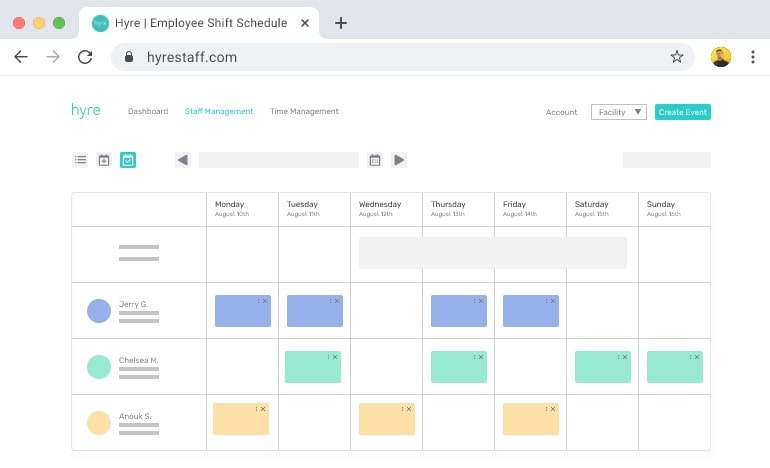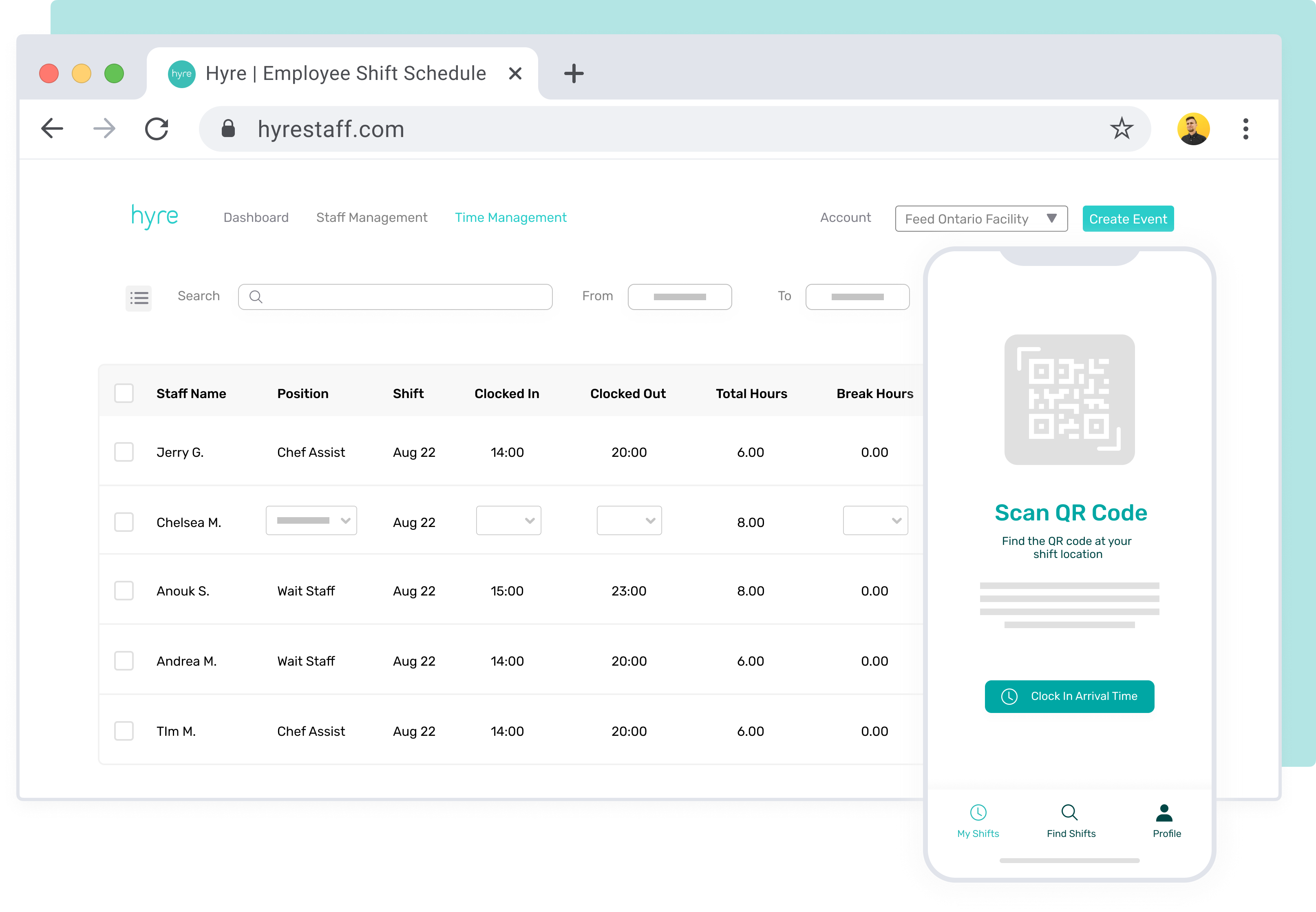Accommodating time-off requests can be difficult to grapple with as a manager. First and foremost, being considerate of your staff’s wishes is important when fostering a trustworthy and supportive work environment. On the other hand, you have to ensure that your operations run smoothly, there are no gaps in your schedule, and your team is productive and engaged. As a result, you are stuck between two extremes. We’d like to help you resolve this issue and manage time-off requests with ease—read on to learn more!
Formalize Your Time Off Request Process with an All-Encompassing Policy
Wondering where to start? The first step is to think about the framework. By creating a set of best practice guidelines for time-off requests, you can streamline the process. Here’s a breakdown of how to do that:
- Brainstorm conflicting situations that may arise.
- Properly assess each situation.
- Create rules for your staff that correspond to each situation.
- Add detailed information (e.g. how many days in advance must a request be submitted for approval).
- Format the guidelines into an all-encompassing time-off request policy.
- Share it with your staff members.
Create a Time Off Request Form
Formalization helps foster order and efficiency. The same principles apply to employee submissions. As soon as you’ve finished creating your policy, it’s time to create a time-off request form. That way, staff can document their requests to get your approval on, and you can keep track of employee availability and avoid overlapping requests. To help with this, we’ve created a fillable time-off request form that you can download for free.
How to Schedule Employees Efficiently Across Departments and Facilities?
With Hyre, you can shape your organization to reflect its unique structure and manage your shift scheduling in unison within departments and facilities.

Keeping in mind common HR practices, the following details may be helpful for your time-off request form (which are also included in our resource):
- Employee’s name
- Employee’s position
- Department/team (if applicable)
- Time-off request dates
- A weekly timetable to indicate which shift(s) an employee is taking off
- “Have you found a shift replacement? (Yes/No)”
- “Approved/denied?” (filled in by managers)
- Employee’s signature and date
- Manager’s signature and date
Other Helpful Tips When Creating an Effective Time Off Request Process
3. Set boundaries to avoid conflicts and misunderstandings
This advice comes in handy when you’re starting to think about what to include in your time-off request policy. Although accommodating your staff’s requests can be the preferred option at times, these requests can easily get out-of-hand without limitations. Be upfront and clear about how many days off are allowed per month, and how far in advance you need to be notified in order to approve a request.
Ask yourself the following questions to make your decisions easier: Is there enough time to find a replacement? How many days do I need in order to find a suitable replacement? How many days off can be requested at once? How frequently can my staff request a day off? Will the time before my approval depend upon the number of days off requested by staff? What are the circumstances in which my staff cannot request time off?
If you put yourself in your staff’s shoes and create reasonable and fair policies to the situations that may arise, they will gladly welcome your improvements. No one likes chaos—especially shift-based workers, who want things to run smoothly just as much as you do.
4. Handle overlapping time-off requests fairly
What do you do when more than one employee requests time off during the same shift times? This is a common conflict that puts managers in an uncomfortable position.
The first come, first served method is a natural way to approach the issue. Technically, it’s as fair as it can get—but if you actually put it into practice, you risk getting more conflicts than anticipated. Every situation/submission is different and should be treated on a case by case basis. Consider the urgency of all requests and prioritize them accordingly. A medical emergency, for example, could be considered priority and that staff’s request could be tended to first.
5. Organize and keep a record of employee submissions
Now that you have your policy in place and have created a form for your staff to fill out, you need to keep track of the submissions and their related paperwork in an ongoing manner. When working in a busy environment, it can be easy to miss small details every so often. Chances are that you might lose a time-off request form or forget about it altogether. We’re all human. If that happens, employees may feel overlooked or start hounding you with reminders about their requests.
What you can do to mitigate this issue is organize your request forms by placing them in folders. For printed requests, keep them in a folder on your desk or designate an area in your workplace where your staff can drop them off. For digital requests, you can create a time-off requests folder in Google Drive, your email inbox, or Dropbox. You can go a step further and categorize requests into multiple folders based on employee names, pending/approved, dates, and more.
A spreadsheet in Excel can help you keep track of all request forms and avoid time off overlappings. That being said, you should be wary of using MS Excel for shift management. It can be retrofitted to suit some of your needs, but its error-prone nature can cost you thousands of dollars. Instead, consider using our employee scheduling software. Our comprehensive tool can help you manage employee availability and time-off requests easily while eliminating the risk of errors.
6. Consider introducing a time-off rotation
Rather than waiting for employees to request time off, consider introducing a time-off rotation. This is a great strategy to increase employee satisfaction and overall productivity, as well as demonstrate the prioritization of your employees’ well-being.
Hopefully, the time-off request process feels more approachable to you now. However, you may find that keeping track of time and attendance using paper or Excel still isn’t ideal. For next-level efficiency, we offer effective solutions that can automate your policies and give your employees the opportunity to swap shifts and find replacements in minutes. According to Forbes, making the switch to digital management can improve operational efficiency by 40% and increase the ability to meet customer expectations by 35%. We’d love to help you grow and improve your business!

Complete the form below to receive your template by email.
Switch from Pen and Paper to Error-Free Timesheets
Automate your timesheets to eliminate errors and ensure accurate payroll management with Hyre’s digital timesheets. Get notified about important discrepancies and missing records to confirm worked shifts with ease and avoid disputes over shift information with staff.

